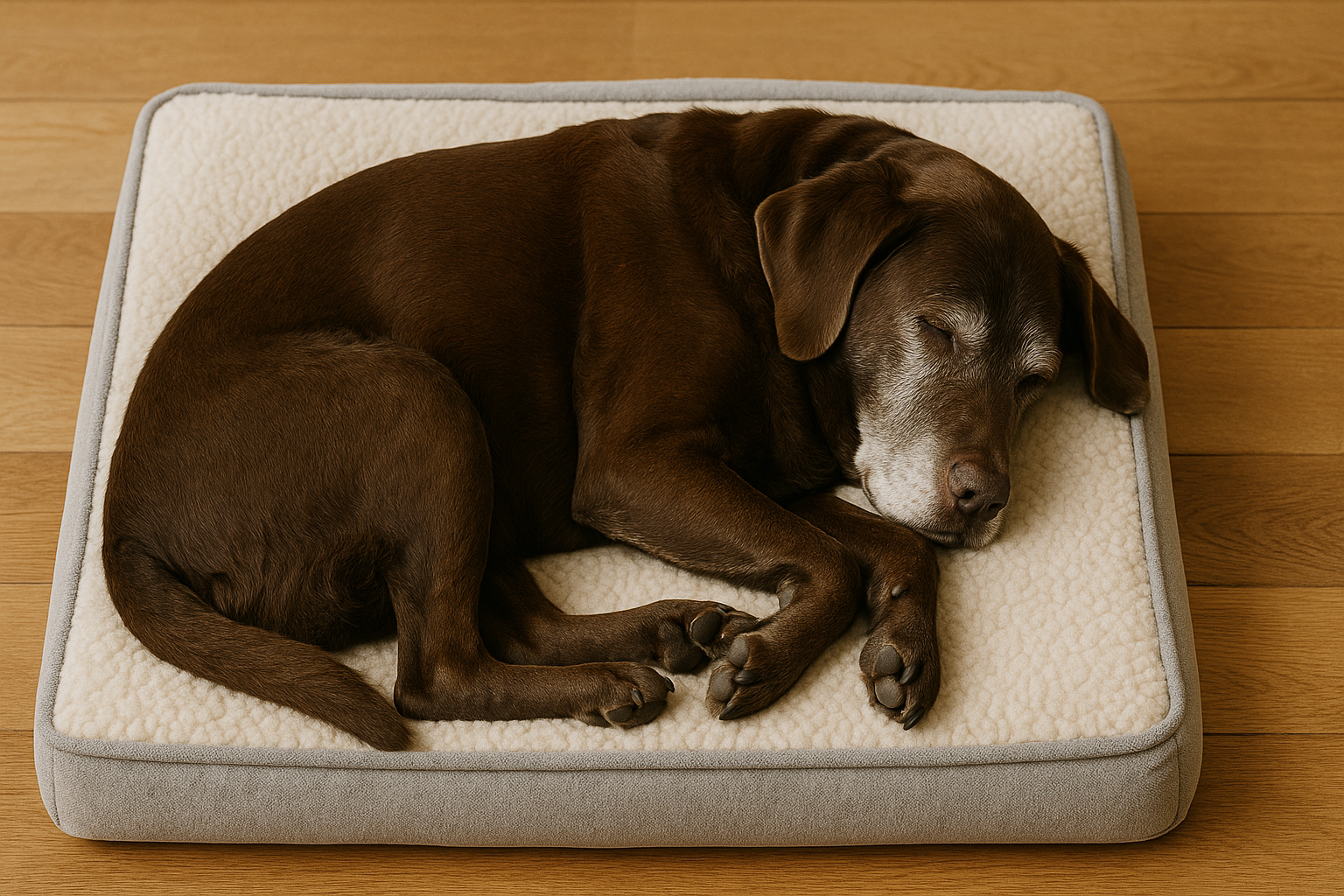
As our beloved dogs grow older, it’s not uncommon to see them slow down, struggle with stairs, or seem stiff after naps. Just like humans, dogs can develop arthritis — a painful, degenerative joint condition that affects mobility and quality of life. While it can be heartbreaking to see your once energetic pup hesitate before jumping on the couch or limping after a walk, the good news is that there’s a lot you can do to help.
This guide walks you through the signs of arthritis in senior dogs and nine effective ways to ease their pain and help them stay comfortable, active, and happy well into their golden years.

What Is Arthritis in Senior Dogs?
Arthritis, or osteoarthritis, is a degenerative joint disease where the cartilage between bones wears down over time. This leads to inflammation, stiffness, and pain. In older dogs, it’s a common condition — especially in larger breeds and those who have been very active or overweight. While it can’t be cured, arthritis can be managed with consistent care and attention.

Signs Your Dog May Have Arthritis
- Limping or stiffness, especially after rest
- Reluctance to climb stairs or jump onto furniture
- Slower movements, shorter walks
- Whining or yelping when touched near joints
- Changes in posture or sleeping positions
- Loss of interest in playing or going outside

How to Help Your Senior Dog with Arthritis
1. Provide a Comfortable Orthopedic Bed
An orthopedic dog bed offers joint support and relieves pressure points. Choose a bed with memory foam and a low entry point for easy access. It’s one of the simplest ways to improve daily comfort.
2. Use Dog Ramps or Stairs
Reduce the need for jumping, which strains joints. Dog ramps for cars, couches, or beds can make a big difference, especially for dogs who love staying close to you.
3. Try Joint Supplements
Supplements like glucosamine, chondroitin, MSM, turmeric, or green-lipped mussel can help reduce inflammation and support cartilage repair. Always consult your vet before starting any supplement regimen.
4. Keep Their Weight in Check
Extra weight puts added stress on joints. A healthy diet, portion control, and consistent low-impact movement can help maintain ideal weight and reduce pain.
5. Gentle Daily Exercise
Short walks, swimming, and light playtime help keep muscles strong and joints flexible. Avoid intense running or jumping that could make things worse.
6. Try Heat Pads or Massage
Warmth soothes stiff joints, and gentle massage can improve circulation. There are pet-safe heating pads designed for dogs — just ensure it’s never too hot.
7. Ask Your Vet About Pain Meds
Your vet may prescribe NSAIDs or other medications to manage pain and inflammation. Don’t give human painkillers — they can be toxic to dogs.

When to Talk to Your Vet
If your dog’s symptoms worsen, they begin limping severely, seem to be in pain despite your efforts, or lose interest in food or movement, it’s time to consult your vet. Arthritis varies in severity and may require a tailored treatment plan.

Final Thoughts: You’re Doing a Good Job
Caring for a senior dog with arthritis can feel overwhelming, but your love and attention make all the difference. With the right care, comfort, and consistency, your dog can still enjoy life and companionship in their golden years.
Every gentle walk, every soft bed, every warm hug — it all matters. You’re helping them age with dignity, comfort, and joy.
